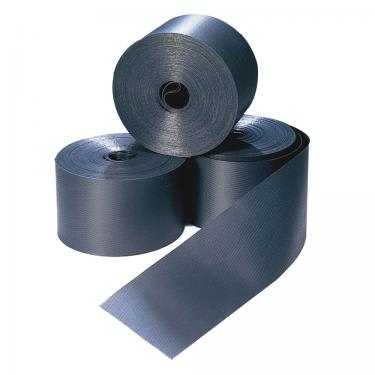Damp Proof Course & Membranes
(7 Products)Dampproofing and membranes act as the first line of defence, preventing water ingress and protecting the integrity of the building envelope. By creating an effective barrier against moisture, DPC and membranes help prevent a range of dampness-related problems, including rising damp, condensation, and water penetration. These protective measures contribute to a healthier and more comfortable living environment.
What Is a Dampproofing Membrane?
Dampproofing Membrane is a versatile waterproofing material used in various applications, including walls, floors, and roofs. Available in liquid or sheet form, dampproofing membrane provides a continuous and impermeable barrier against moisture intrusion.
Dampproofing membranes are commonly composed of materials like bitumen, synthetic rubber, or polyethylene, designed to resist water penetration while maintaining flexibility and durability.
What Is a Damp Proof Course?
Damp Proof Course (DPC) refers to a protective layer or barrier integrated into building construction to prevent moisture from rising through walls and floors, or foundations.
Typically made from materials such as bitumen, PVC, or chemical additives, DPC acts as a waterproofing agent, intercepting the upward movement of moisture and redirecting it away from vulnerable areas.
Understanding Damp-proofing: Types of Damp
Understanding the different types of damp is essential for identifying and addressing the specific causes and implementing effective remedial measures.
- Rising damp: Moisture that travels up through the walls from the ground, often caused by a lack of or a compromised damp-proof course.
- Penetrating damp: Water that enters the building through gaps or cracks in the walls, roof, or windows, typically due to issues with the building's external structure.
- Condensation: Moisture that forms when warm, moist air comes into contact with colder surfaces, leading to damp patches and mould growth.
- Lateral damp: Water that seeps horizontally through the walls due to external sources like overflowing gutters or high ground levels.
Be sure to consult a damp-proofing specialist to identify suitable damp-proofing solutions.
The Signs of Penetrating Damp
The signs of penetrating damp can manifest in various ways, indicating the presence of moisture infiltrating through the building's internal walls.
Look out for:
- Damp patches or watermarks on walls and ceilings
- Peeling or bubbling paint or wallpaper
- Visible mould or mildew growth
- Musty odours
- Damp or rotting skirting boards
These signs often indicate a compromised external barrier, allowing water to penetrate and affect the internal surfaces.
If you notice any of these signs, it is crucial to address the issue promptly to prevent further damage and maintain a healthy living environment.
Frequently Asked Damp Proofing Questions
What Are The Signs Of A Failed or Compromised Damp Proofing Treatment?
Signs of a failed or compromised damp course may include damp patches, mould growth, musty odours, peeling wallpaper or paint, and rotting skirting boards or floor timbers. It is important to address these issues promptly to prevent further damage.
Can I Install A Dampproofing Membrane Myself, or Should I Hire a Professional?
Installing a damp proof membrane requires proper knowledge, expertise, and the right tools. For optimal results and to ensure compliance with building regulations, it is advisable to hire damp proofing specialists/ consult damp proofing services to determine the best damp treatment.
Are There Any Regulations or Building Codes Governing Damp Treatments?
Yes, there are building regulations and codes that specify the requirements for damp proofing work in construction. These regulations vary by region, and it is essential to adhere to local guidelines and standards.
How Do I Choose The Right Damp Proofing Treatments For My Building?
Selecting the appropriate damp-proofing solution depends on factors such as the type of construction, the severity of moisture issues, and the specific requirements of the building. Consulting with a qualified professional can help determine the best solution for your project.
How Do Damp-proofing Membranes Prevent Damp?
Damp-proofing membranes work by creating an impermeable layer that prevents the passage of moisture. They are installed on walls or floors to stop dampness from rising or penetrating into the building, keeping the interior dry and protected.
Can Damp-proofing Membranes Accommodate Structural Movement?
Yes, damp-proofing membranes are designed to be flexible and can accommodate some degree of structural movement. This ensures that they can adapt to changes in the building's foundation or settlement without compromising their effectiveness.




